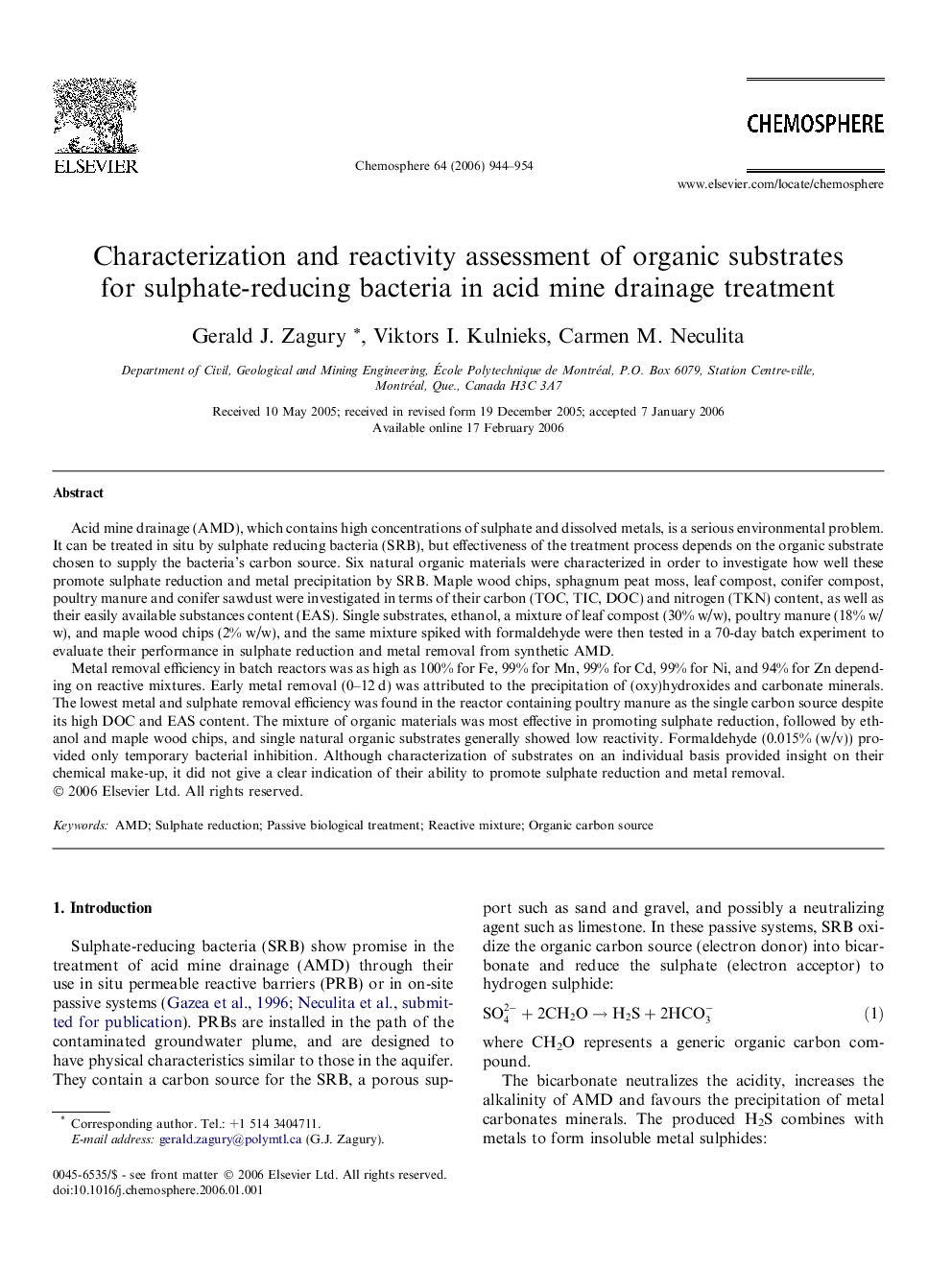| کد مقاله | کد نشریه | سال انتشار | مقاله انگلیسی | نسخه تمام متن |
|---|---|---|---|---|
| 4416200 | 1307772 | 2006 | 11 صفحه PDF | دانلود رایگان |

Acid mine drainage (AMD), which contains high concentrations of sulphate and dissolved metals, is a serious environmental problem. It can be treated in situ by sulphate reducing bacteria (SRB), but effectiveness of the treatment process depends on the organic substrate chosen to supply the bacteria’s carbon source. Six natural organic materials were characterized in order to investigate how well these promote sulphate reduction and metal precipitation by SRB. Maple wood chips, sphagnum peat moss, leaf compost, conifer compost, poultry manure and conifer sawdust were investigated in terms of their carbon (TOC, TIC, DOC) and nitrogen (TKN) content, as well as their easily available substances content (EAS). Single substrates, ethanol, a mixture of leaf compost (30% w/w), poultry manure (18% w/w), and maple wood chips (2% w/w), and the same mixture spiked with formaldehyde were then tested in a 70-day batch experiment to evaluate their performance in sulphate reduction and metal removal from synthetic AMD.Metal removal efficiency in batch reactors was as high as 100% for Fe, 99% for Mn, 99% for Cd, 99% for Ni, and 94% for Zn depending on reactive mixtures. Early metal removal (0–12 d) was attributed to the precipitation of (oxy)hydroxides and carbonate minerals. The lowest metal and sulphate removal efficiency was found in the reactor containing poultry manure as the single carbon source despite its high DOC and EAS content. The mixture of organic materials was most effective in promoting sulphate reduction, followed by ethanol and maple wood chips, and single natural organic substrates generally showed low reactivity. Formaldehyde (0.015% (w/v)) provided only temporary bacterial inhibition. Although characterization of substrates on an individual basis provided insight on their chemical make-up, it did not give a clear indication of their ability to promote sulphate reduction and metal removal.
Journal: Chemosphere - Volume 64, Issue 6, August 2006, Pages 944–954